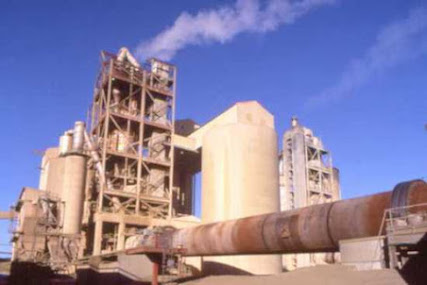A number of cement plants can do production well by using only limestone and clay raw materials. This is because the material has fulfilled all the oxides needed in the manufacture of the clinker. The oxides needed are CaO (C), SiO2 (S), Al2O3 (A) and Fe2O3 (F). Limestone itself usually has a CaO (C) content of around 90% and 5% SiO2 (S). But the facts on the ground are that many cement plants require additional materials to achieve the desired oxide composition or commonly called corrective materials. A number of these corrective materials are high grade limestone which has a CaO content of above 95% as C oxide correction, then silica sand for S oxide correction, then kaolin or bauxite for A oxide correction and iron ore or pyrite for F oxide correction.
So in general, currently the materials needed for the production of clinker are limestone, clay, silica sand and iron ore. In its development iron ore can be replaced with slag. The content of Fe2O3 (F) slag is lower than iron ore but the price is cheaper. The slag used mainly comes from the iron and steel industry, commonly known as GBFS or GGBFS. Slag is actually also an additive material that can be added with clinker and gypsum so that it becomes a product (slag) cement. In addition to other slag materials such as fly ash which are also commonly used as a additive, these two materials are commonly called cement supplement materials or SCM (supplementary cementious materials). Fly ash which is very fine does not need to be crushed anymore so it can be mixed directly with clinker and gypsum, while slag from iron or steel industry needs to be crushed again into GGBFS before being mixed with clinker and gypsum. For the need for these additives, in addition to physical aspects such as particle size, chemical aspects, namely slag chemistry and fly ash chemistry, are important parameters that need attention.
The use of SCM such as slag and fly ash above, will reduce the use, especially of fossil fuels. This is because SCM is added to clinker and gypsum so it does not require heat energy. Heat energy itself is needed in the manufacture of clinker, namely in the calciner and rotary kiln. For example, the manufacture of slag cement produces 38% less CO2 emissions than the process for the production of portland cement because less limestone is burned for the production of slag cement than is required for Portland cement. This heat energy currently still uses a lot of fossil fuels and is gradually starting to use renewable energy. Energy derived from biomass such as agricultural waste and animal manure is also starting to be used.








No comments:
Post a Comment